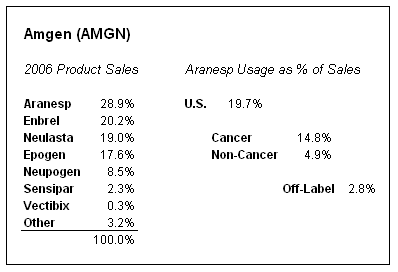After handing off the CEO post to Kevin Rollins at Dell (DELL) for a few years, founder Michael Dell has returned to try and help his company find its way back to the top. Dell came out of nowhere in the 1990's to overtake the likes of Hewlett Packard (HPQ) and IBM (IBM) in the PC market and earned the number one spot in worldwide market share. However, customer service issues have hurt the company in recent years and a reinvigorated Hewlett Packard (thanks to the entrance of Mark Hurd) now holds the top spot.
So what is Michael Dell's master plan to get back to the top? Last week we learned that the company will begin selling several desktop models in 3,000 Wal-Mart (WMT) stores nationwide. Upon hearing the news I couldn't help but ask myself, "How is that going to help Dell solve its problems?"
After all, the company built its business perfecting the direct distribution model that Dell created in his University of Texas dorm room in the 1980's (he subsequently dropped out). Furthermore, the company focused on the higher end corporate, government, and education markets, leaving the likes of HP, Compaq, Gateway (GTW), IBM (IBM), eMachines, and Packard Bell to fight over the low-end consumer segment. That market didn't turn out to be a very lucrative one. Packard Bell no longer exists. IBM sold its PC business to Lenovo. Compaq was forced to merge with HP. A struggling Gateway bought out eMachines, but still is doing poorly.
Now we hear that Dell is entering the retail channel with what I would have to think (given Wal-Mart's customer base) is a low-end desktop computer. This decision really doesn't make a whole lot of sense to me. The company thrived by shying away from the exact area they now are going to go after. Let's not forget that Dell at first refused to offer desktop models at $300 and $400 price points, instead focusing on higher margin products. They eventually gave in and also began using Advanced Micro Devices (AMD) chips (under Rollins), something they did not do for a long time.
It has been well publicized that Dell has lost market share due to sub par customer service. The company opted to outsource their customer support in order to save money, but the result was consumers waiting on the phone for hours and upon finally getting through, not really getting helpful information. Dell should really focus on what it is that lost them market share in the first place. You can't argue that it was ignoring the low-end PC market, because Dell was number one years back when they were avoiding that segment entirely. If Dell doesn't fix their image of having poor customer support, their market share numbers aren't going to improve dramatically. Even if someone buys a Dell at Wal-Mart, a bad experience will ensure they buy HP or another brand the next time around.
All of that said, you can understand why Dell has decided to go the Wal-Mart route. If they think the key is to regain lost market share at HP's expense, then selling computers at the world's largest retailer would be a great way to boost unit volume. The only problem with that strategy is that profits won't greatly improve and as long as customer support remains lousy, new customers won't result in a high percentage of repeat business, which is really something Dell needs to maintain to sustain any sort of reemergence as the worldwide PC leader.
It seems to me Dell is focused on a short-term impact, something that can score a few points of market share. While that may be attainable, they run the risk of not really improving the overall Dell experience, either as a shareholder or as a computer user. And without that, a Dell turnaround might be very, very difficult.
Full Disclosure: No positions in any of the companies mentioned at the time of writing




